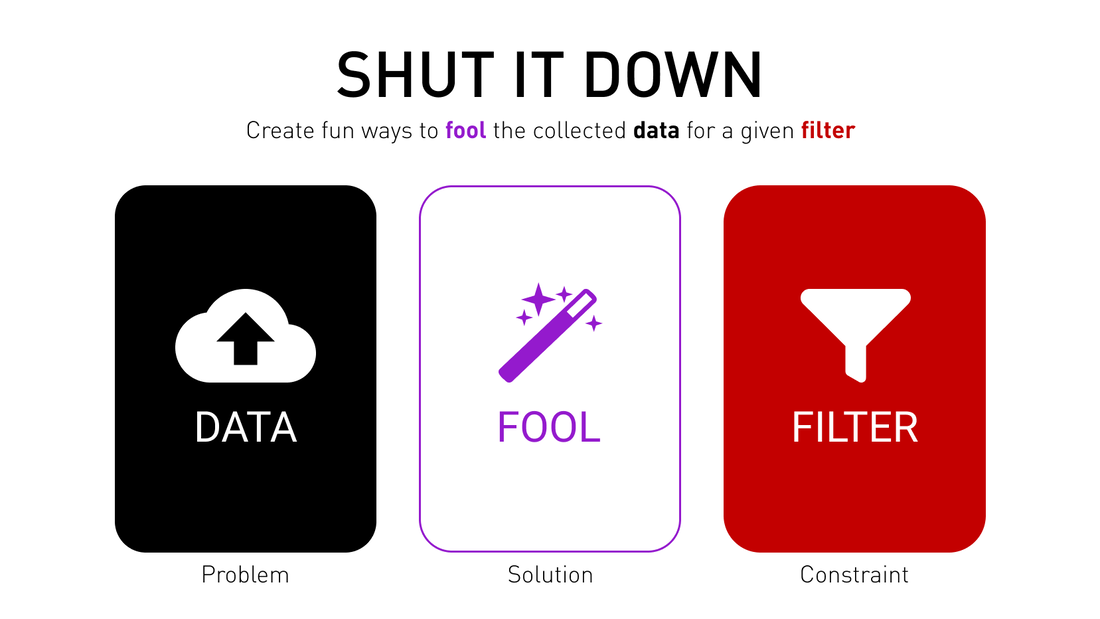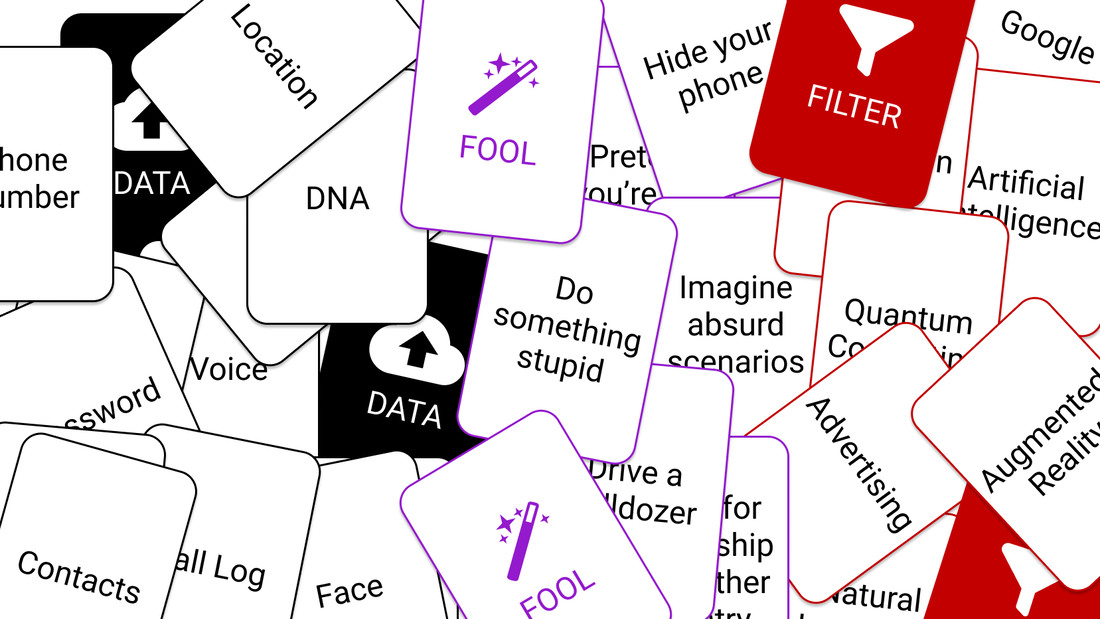|
Intro Shut it down is a game for self-conscious and creative individuals to find innovative ways to protect their privacy. In a world driven by data collection, the game serves as an outlet to understand these scenarios and reflect on them in a collaborative way. The expression “Shut it down” refers to the idea of closure, indicating a forced end to some activity. In the context of the game, this means to think about ways to prevent data collection by doing things other than shutting it down (the last step). The idea is to allow people to act as the society asks them to, and making them conscious to look for alternatives. The game is a part of the thesis project for Parsons School of Design, conceptualized and developed by Akshansh Chaudhary. The format of the game is inspired by games like Cards Against Humanity and VC Bait. Setup The game contains three types of cards: Data, Fool, and Filter. The data cards show the sources of data collection, like email, phone number, password, DNA, among others. The Fool cards suggest the ways in which data can be fooled. They serve as hints to find fun ways to prevent data collection. The filter cards offer an additional layer of structure to the game. As the name suggests, the filters promote the players to think how to fool the data from the perspective of an industry, technology, or a particular company. Rules ▪ Shuffle and place the Data and Filter cards in individual piles on the table. ▪ Shuffle and deal each player five Fool cards. ▪ Each round of play has four phases: thinking, collecting, saying, and selecting. ▪ Pick one player to be the Master for the first round. All other players are Users. ▪ The Users look at their fool cards. ▪ A round of play begins when the Master draws a Data and a Filter card. The Master briefly explains the data that is being collected for that round, and the filter to be used to sample that data. For instance, email (data) for Google (filter) would mean data collected by Google in its email service (Gmail) — emails, attachments, calendar, contacts, among others. ▪ The Master then turns on a 1-minute timer to begin thinking. ▪ Thinking ▪ Users have one minute to think of a way to fool this data collection based on any of their five Fool cards, given the Data and Filter cards. For example, a Fool card of “Write a love letter” could be used to write physical letters instead of using electronic mail services by Google. Since the automated systems can only read online content, the physical letters would be secure. ▪ Note: If a user receives a Shut it down card, that means they now have the liberty to shut down or close the source of that data collection for the respective filter. Now, they are not thinking of ways to fool, but to fight. They must be creative in their ideas. ▪ Collecting ▪ Within that minute, all users pass their chosen Fool card, face down, to the Master; these cards make up the round’s collection. ▪ The Master looks at the collected cards and chooses any Fool card to begin the Saying stage. ▪ Saying ▪ The user who played that Fool card then states their idea. ▪ The Master then repeats this process until all users have stated their ideas to fool data. ▪ Selecting ▪ The Master must select one idea after evaluating them with respect to the given Data and Filter cards. The Master then explains their decision to the users, discards the other Fool cards, and passes the winning Fool card to the winning user. ▪ This user keeps it to the side to indicate they won that round. ▪ All users draw a new Fool card from the pile to replace the Fool card they played in that round; the Master discards the played Data and Filter cards. ▪ Repeat ▪ The player to the right of the Master becomes the next Master, and a new round begins. ▪ Play as many rounds as you’d like; the winner is the user with the most selected ideas. Make Your Own
0 Comments
Leave a Reply. |
||||||


